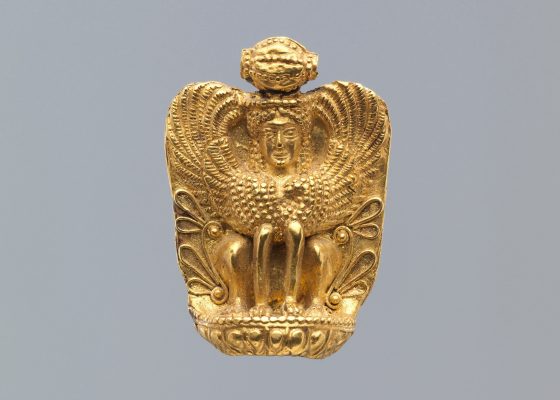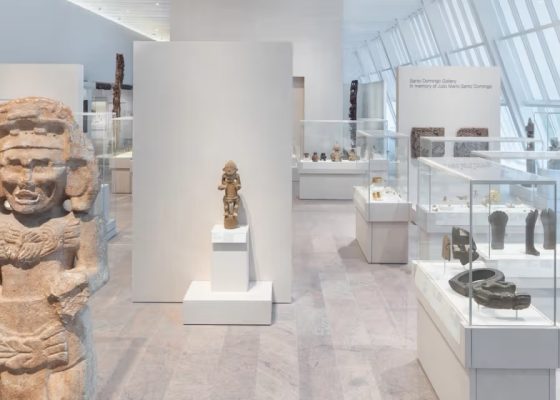
By Christabel Akerele
In 2019, 19-year-old Fionn Ferreira won the Google Science Fair for his groundbreaking invention on how to tackle plastic pollution in aquatic bodies. His invention involves using magnets to attract microplastics from water. At first, it appeared rather simplistic, after over 5000 trials it was proven to be a whopping 87% effective.
Fionn Ferreira is a young inventor and chemistry student at Groningen University in the Netherlands who is passionate about creating a plastic-free environment.
Plastic pollution is a very real and severe problem in the world today. Many regulations have been put in place and many attempts have been made to control the production and disposal of plastic waste, however, they have proven rather ineffective in managing the $579.7 billion industry.
Since it first began to gain popularity in the early 1950s, more than 8.3 billion tons of plastic have been produced to date, with more than half of this production coming from after the early 2000s in which the “output of plastic waste rose more in a single decade than it had in the previous 40 years.”
This means that nearly 300 million tons of plastic waste are produced every year, almost equal to the weight of the entire human population.
However, despite the boom of the industry, attempts to provide effective solutions to the plastic waste dilemma have proven rather ineffective. Research shows that “only 9% of all plastic waste ever produced has been recycled. About 12% has been incinerated, while the rest — 79% — has accumulated in landfills, dumps or the natural environment”.
Despite this, production of plastics is estimated to increase by 60% by 2030 and triple by 2050. In the light of this, the Ellen MacArthur Foundation suggests that by 2050, there will be more plastic than fish in our waters.
The consequences of increased plastic waste on the environment are disastrous. Because plastics are non-biodegradable, they keep accumulating in water bodies all over the world. They are frozen solid in the artic, and littered all over the reefs. Some of today’s natural disasters are suspected to be a result of increased waste in our water bodies that inevitably increases the weight and force of moving water.
The effect on aquatic life is also alarming as many underwater creatures struggle to survive in what is becoming an unnatural environment. Consequently, all of these affect humans in overwhelmingly negative ways.
However, what about the plastic we cannot see? Microplastics are small plastic pieces less than five millimeters long which can be harmful to our ocean and aquatic life. They can be found everywhere, from our clothes to our drinking water, to shampoo and laundry detergents, they are absolutely littered throughout our entire lives.
According to BBC news, ‘chemicals used in plastic have… been linked to a range of health problems including cancer, heart disease and poor foetal development.’ The danger that microplastics pose is their largely undetectable presence in many fluids. Research proves that people ingest an average of 5g of plastic every week globally.
Fionn, who is aware of the dilemma, stumbled on an idea that could help protect the human race from itself.
The idea is built on the fact that microplastics attract pathogens and heavy metals. Fionn created a magnetic fluid called Ferrofluid, that clings to microplastics present in water and then uses a magnet to remove all the microplastics from the solution, leaving behind only water.
Much of the scientific world received this simple idea as groundbreaking, as Fionn’s design not only removes plastic waste from moving water, but it is also very effective in removing all types of microplastics as well.
Fionn is now working in conjunction with several other scientists to produce a cheap, environmentally friendly and effective device that integrates nicely with existing facilities and that can be used across various structures, from homes to schools and offices.
By attracting the plastic we cannot see, Fionn has given the world a fighting chance in combating our self-made omnipresent enemy






Cancel anytime


Using our website
You may use the The Middle Land website subject to the Terms and Conditions set out on this page. Visit this page regularly to check the latest Terms and Conditions. Access and use of this site constitutes your acceptance of the Terms and Conditions in-force at the time of use.
Intellectual property
Names, images and logos displayed on this site that identify The Middle Land are the intellectual property of New San Cai Inc. Copying any of this material is not permitted without prior written approval from the owner of the relevant intellectual property rights.
Requests for such approval should be directed to the competition committee.
Please provide details of your intended use of the relevant material and include your contact details including name, address, telephone number, fax number and email.
Linking policy
You do not have to ask permission to link directly to pages hosted on this website. However, we do not permit our pages to be loaded directly into frames on your website. Our pages must load into the user’s entire window.
The Middle Land is not responsible for the contents or reliability of any site to which it is hyperlinked and does not necessarily endorse the views expressed within them. Linking to or from this site should not be taken as endorsement of any kind. We cannot guarantee that these links will work all the time and have no control over the availability of the linked pages.
Submissions
All information, data, text, graphics or any other materials whatsoever uploaded or transmitted by you is your sole responsibility. This means that you are entirely responsible for all content you upload, post, email or otherwise transmit to the The Middle Land website.
Virus protection
We make every effort to check and test material at all stages of production. It is always recommended to run an anti-virus program on all material downloaded from the Internet. We cannot accept any responsibility for any loss, disruption or damage to your data or computer system, which may occur while using material derived from this website.
Disclaimer
The website is provided ‘as is’, without any representation or endorsement made, and without warranty of any kind whether express or implied.
Your use of any information or materials on this website is entirely at your own risk, for which we shall not be liable. It is your responsibility to ensure any products, services or information available through this website meet your specific requirements.
We do not warrant the operation of this site will be uninterrupted or error free, that defects will be corrected, or that this site or the server that makes it available are free of viruses or represent the full functionality, accuracy and reliability of the materials. In no event will we be liable for any loss or damage including, without limitation, loss of profits, indirect or consequential loss or damage, or any loss or damages whatsoever arising from the use, or loss of data, arising out of – or in connection with – the use of this website.
Last Updated: September 11, 2024
New San Cai Inc. (hereinafter “The Middle Land,” “we,” “us,” or “our”) owns and operates www.themiddleland.com, its affiliated websites and applications (our “Sites”), and provides related products, services, newsletters, and other offerings (together with the Sites, our “Services”) to art lovers and visitors around the world.
This Privacy Policy (the “Policy”) is intended to provide you with information on how we collect, use, and share your personal data. We process personal data from visitors of our Sites, users of our Services, readers or bloggers (collectively, “you” or “your”). Personal data is any information about you. This Policy also describes your choices regarding use, access, and correction of your personal information.
If after reading this Policy you have additional questions or would like further information, please email at middleland@protonmail.com.
PERSONAL DATA WE COLLECT AND HOW WE USE IT
We collect and process personal data only for lawful reasons, such as our legitimate business interests, your consent, or to fulfill our legal or contractual obligations.
Information You Provide to Us
Most of the information Join Talents collects is provided by you voluntarily while using our Services. We do not request highly sensitive data, such as health or medical information, racial or ethnic origin, political opinions, religious or philosophical beliefs, trade union membership, etc. and we ask that you refrain from sending us any such information.
Here are the types of personal data that you voluntarily provide to us:
As a registered users or customers, you may ask us to review or retrieve emails sent to your business. We will access these emails to provide these services for you.
We use the personal data you provide to us for the following business purposes:
Information Obtained from Third-Party Sources
We collect and publish biographical and other information about users, which we use to promote the articles and our bloggers who use our sites. If you provide personal information about others, or if others give us your information, we will only use that information for the specific reason for which it was provided.
Information We Collect by Automated Means
Log Files
The site uses your IP address to help diagnose server problems, and to administer our website. We use your IP addresses to analyze trends and gather broad demographic information for aggregate use.
Every time you access our Site, some data is temporarily stored and processed in a log file, such as your IP addresses, the browser types, the operating systems, the recalled page, or the date and time of the recall. This data is only evaluated for statistical purposes, such as to help us diagnose problems with our servers, to administer our sites, or to improve our Services.
Do Not Track
Your browser or device may include “Do Not Track” functionality. Our information collection and disclosure practices, and the choices that we provide to customers, will continue to operate as described in this Privacy Policy, whether or not a “Do Not Track” signal is received.
HOW WE SHARE YOUR INFORMATION
We may share your personal data with third parties only in the ways that are described in this Privacy Policy. We do not sell, rent, or lease your personal data to third parties, and We does not transfer your personal data to third parties for their direct marketing purposes.
We may share your personal data with third parties as follows:
There may be other instances where we share your personal data with third parties based on your consent.
HOW WE STORE AND SECURE YOUR INFORMATION
We retain your information for as long as your account is active or as needed to provide you Services. If you wish to cancel your account, please contact us middleland@protonmail.com. We will retain and use your personal data as necessary to comply with legal obligations, resolve disputes, and enforce our agreements.
All you and our data are stored in the server in the United States, we do not sales or transfer your personal data to the third party. All information you provide is stored on a secure server, and we generally accepted industry standards to protect the personal data we process both during transmission and once received.
YOUR RIGHTS/OPT OUT
You may correct, update, amend, delete/remove, or deactivate your account and personal data by making the change on your Blog on www.themiddleland.com or by emailing middleland@protonmail.com. We will respond to your request within a reasonable timeframe.
You may choose to stop receiving Join Talents newsletters or marketing emails at any time by following the unsubscribe instructions included in those communications, or you can email us at middleland@protonmail.com
LINKS TO OTHER WEBSITES
The Middle Land include links to other websites whose privacy practices may differ from that of ours. If you submit personal data to any of those sites, your information is governed by their privacy statements. We encourage you to carefully read the Privacy Policy of any website you visit.
NOTE TO PARENTS OR GUARDIANS
Our Services are not intended for use by children, and we do not knowingly or intentionally solicit data from or market to children under the age of 18. We reserve the right to delete the child’s information and the child’s registration on the Sites.
PRIVACY POLICY CHANGES
We may update this Privacy Policy to reflect changes to our personal data processing practices. If any material changes are made, we will notify you on the Sites prior to the change becoming effective. You are encouraged to periodically review this Policy.
HOW TO CONTACT US
If you have any questions about our Privacy Policy, please email middleland@protonmail.com
The Michelin brothers created the guide, which included information like maps, car mechanics listings, hotels and petrol stations across France to spur demand.
The guide began to award stars to fine dining restaurants in 1926.
At first, they offered just one star, the concept was expanded in 1931 to include one, two and three stars. One star establishments represent a “very good restaurant in its category”. Two honour “excellent cooking, worth a detour” and three reward “exceptional cuisine, worth a
Thank you for your participation,
please Log in or Sign up to Vote

123Sign in to your account